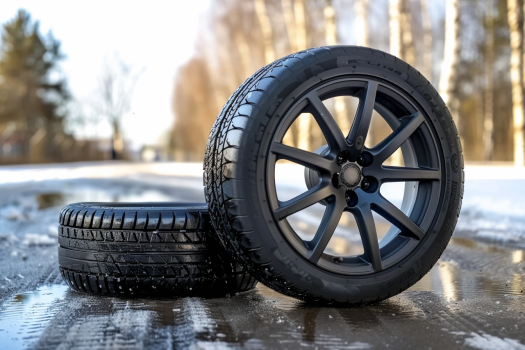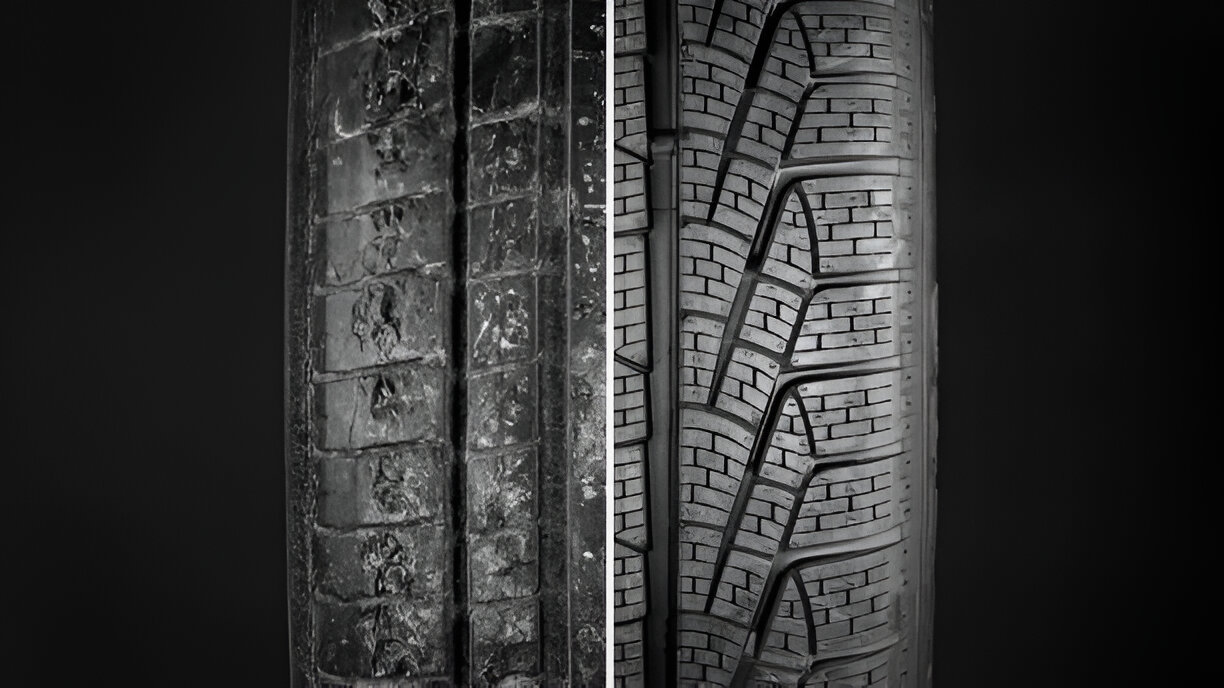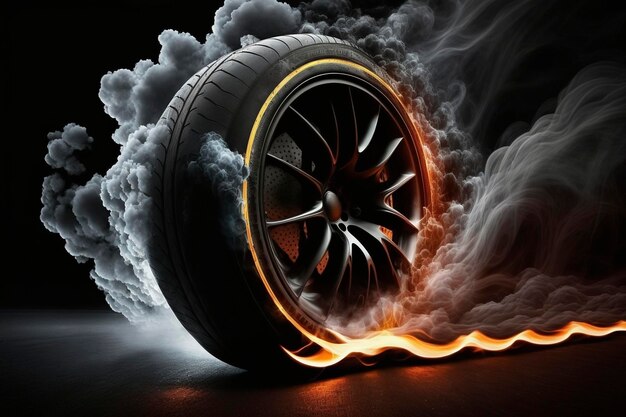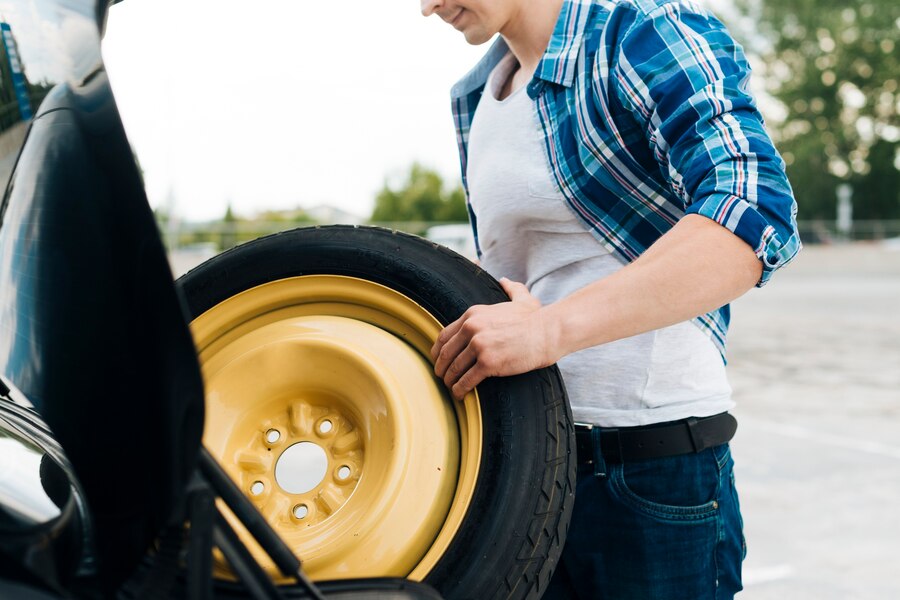Last Updated on July 5, 2024
Exploring the Common Reasons Behind Tire Failures
Nothing is more frustrating than a tire blow-out or a tire problem requiring an unplanned, early replacement of a new tire. When this happens, we often think the tire wasn’t strong enough or there is some defect in the tire. Manufacturing defects, poor quality, or faulty materials are rarely the causes of tire failure. 99% of the time, the causes of tire failure leading to a blow-out or pre-mature tire replacement were completely avoidable with more care and attention during routine maintenance or while driving.
1) Causes of Tire Failure: Under-inflation
One of the leading causes of tire failure is under-inflation. Tires that are under-inflated flex more in the sidewall. Excessive flexing causes them to heat up far beyond standard operating temperatures. This problem is compounded when driving at highway speeds during hot weather for long periods. When the tire gets excessively hot, the rubber begins to degrade, which, if conducted on long enough, leads to a rupture in the sidewall of the tire or tread separation. The result is an immediate and rapid loss of air pressure, often accompanied by a loud bang as the tire explodes.
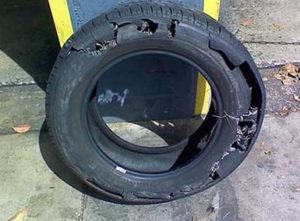
In addition to the sidewall splitting, the inner liner usually has evidence that the tire was run at low air pressure before it exploded. When the tire has been removed from the wheel, look for small chunks of burnt-looking rubber and dust that have come off the inner liner. If your tire looks like this, tire manufacturers and most extended tire warranty programs will likely deny any claim for credit or free replacement.
2) Causes of Tire Failure: Rapid / Irregular wear due to Mechanical Issues
Misalignment or worn suspension parts are another primary reason a tire does not wear evenly. The tire will be completely worn on one side or in one area of the tire but perfect, with plenty of tread on the other parts. The owner has no choice but to replace the tire. Even if only 10% of the tread is worn through, that area will be the weakest and the most susceptible to flats. This condition also contributes to poor traction and ride quality.
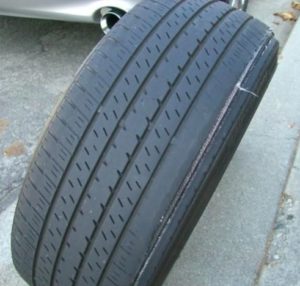
Two tread wear patterns indicate the type of mechanical problem. The most common is tire wear associated with wheel misalignment. In this situation, one or more of the wheels and tires are going down the road at an angle to the direction of travel or with too much camber built into the wheel setup. In either case, rubber wears faster on one side of the tire than the other, as shown in the photograph on the right. This tire has worn to the cords on one side but still has plenty of rubber on the opposite shoulder. If the vehicle was aligned correctly, this tire would have worn evenly across the tread and stayed on the car for another 30,000 or 40,000 miles.
The second wear pattern that indicates a mechanical problem with the vehicle’s suspension is shown below on the left. Broken suspension parts or worn-out and loose bearings or bushings create a wobble in the wheel and tire. Over time, the
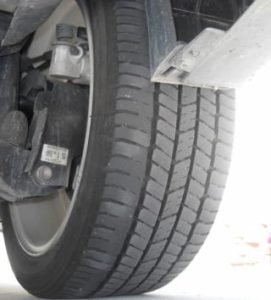
wobble in the wheel and tire manifests itself in the tire tread rubber, either as cupping on the shoulder tread blocks or as diagonal stripes of wear across the surface of the tread. These wear patterns indicate a serious suspension issue that needs to be addressed for safety reasons and the sake of the tire tread life.
While some tires may be slightly more resistant to irregular wear, even the most expensive, premium ones will be replaced early compared to tires on a well-maintained and correctly aligned vehicle. Any tire professional or service technician can identify wear patterns on a tire tread associated with mechanical issues. Similar to when tires are under-inflated, tires that exhibit these wear patterns will not be eligible for a free replacement or any pro-rated credit towards a new tire.
3) Causes of Tire Failure: Road Hazards!
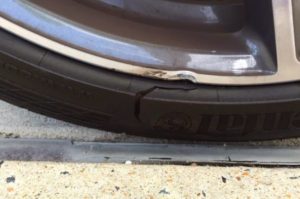
If you drive down the road at 50 or 60 mph and hit a pothole or run over an obstacle, the tire takes the full brunt of the impact. If the impact is hard enough, the tire’s sidewall will compress and be squeezed between the object and the wheel flange. This “pinch-shock” can cause a chunk to come off the tire or a large crack to form on the sidewall where the cords have broken (see photo on the left). This is a widespread occurrence on low-profile tires.
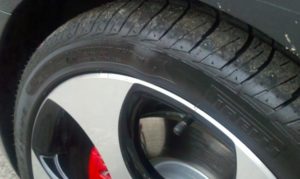
The sidewall bulges from broken cords inside the tire. While avoidable, road hazards are a fact of life for even the most diligent of drivers. The photo on the left is a tire that has broken internal cords on the sidewall, likely due to an impact. The impact broke the cords, but not hard enough to split or crack the rubber. If you see a bulge like this on any of your tires, it should be removed and replaced as soon as possible. If not replaced, the tire could eventually fail.
Conclusion
In the world of tires, knowing what causes them to fail is crucial for your safety. T tire failure’s top causes include underinflation, overloading, and wear and tear. Surprisingly, manufacturer defects are not a common culprit. By keeping your tires properly inflated, avoiding overloading, and practicing safe driving habits, you can significantly reduce the risk of tire failure and ensure a smoother journey. Remember, the key to tire longevity and safety is in your hands!
FAQs
What are the common causes of tire failure?
Tire failure can occur for various reasons, including underinflation, overinflation, worn-out tread, overloading, hitting potholes or curbs, and exposure to extreme temperatures. Regular maintenance and proper tire care can help prevent these issues.
Is manufacturer defect a common cause of tire failure?
No, manufacturer defects are relatively rare causes of tire failure. Most tire failures result from wear and tear, improper maintenance, or external damage. It’s crucial to follow recommended tire maintenance practices to reduce the risk of failure.
How can I prevent tire failures?
To prevent tire failures, regularly check your tire pressure, inspect the tread for wear, avoid overloading your vehicle, drive cautiously to avoid road hazards, and store your tires properly when not in use. Regular maintenance and careful driving are crucial to tire safety.
How to avoid tire-related problems?
The best way to get the most mileage out of your tires and avoid a blow-out is to ensure your vehicle is in good operating condition, regularly check your tire air pressure, and drive carefully to avoid road hazards.






